
Chrysotoxum cautum is a species of Palearctic hoverfly of the genus Chrysotoxum. The larvae are thought to feed on root aphids. Adults are usually found on the edges of woodland or scrub or along hedgerows where they visit a wide range of flowers, usually in small numbers.

Leucozona glaucia, the Pale-saddled Leucozona is a Palearctic hoverfly. Larvae feed on ground layer aphids. Adults are usually seen visiting flowers.

Leucozona laternaria is a European species of hoverfly.

Parasyrphus annulatus is a Palearctic species of hoverfly.
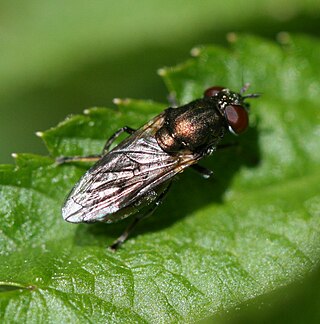
Orthonevra nobilis is a species of hoverfly.

Platycheirus rosarum is a species of hoverfly found in the Palearctic. Like its close relative Platycheirus granditarsus, it can be found in marshy meadows and ditches; indeed, the two species can often be found together. The flight time is between May and October, though it peaks in abundance in June and July.

Pipiza noctiluca is a species of Hoverfly, from the family Syrphidae, in the order Diptera.

Pipiza bimaculata is a species of hoverfly, from the family Syrphidae, in the order Diptera.
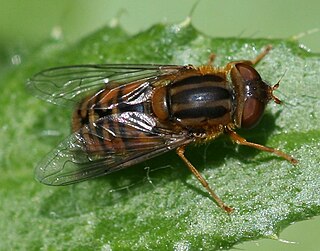
Parhelophilus versicolor is a European hoverfly.

Anasimyia lineata is a Palaearctic species of hoverfly.
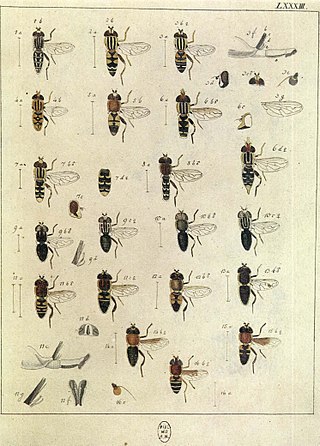
Anasimyia lunulata is a European species of hoverfly.

Anasimyia transfuga is a Palearctic species of hoverfly.
Platycheirus amplus is a Holarctic species of hoverfly found in wetlands, fens, moorland streams and bogs.
Melangyna arctica is a Holarctic species of hoverfly.
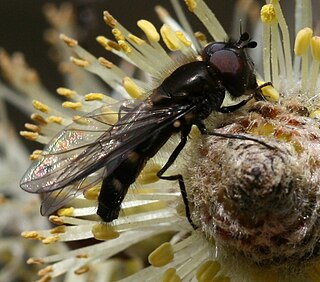
Melangyna quadrimaculata is a European species of hoverfly.

Cheilosia nebulosa is a Palearctic species of hoverfly.
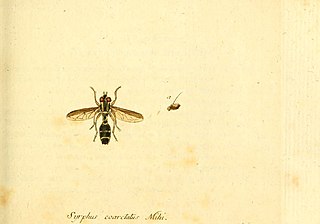
Doros profuges is a Palearctic species of hoverfly.

Orthonevra geniculata is a species of hoverfly found in the Palearctic.

Cheilosia impressa is a Palearctic species of hoverfly. Like most members of its genus C. impressa is a rather small, dark insect and identification can be problematic.
Chrysotoxum fasciatum is a species of Holarctic hoverfly.
















